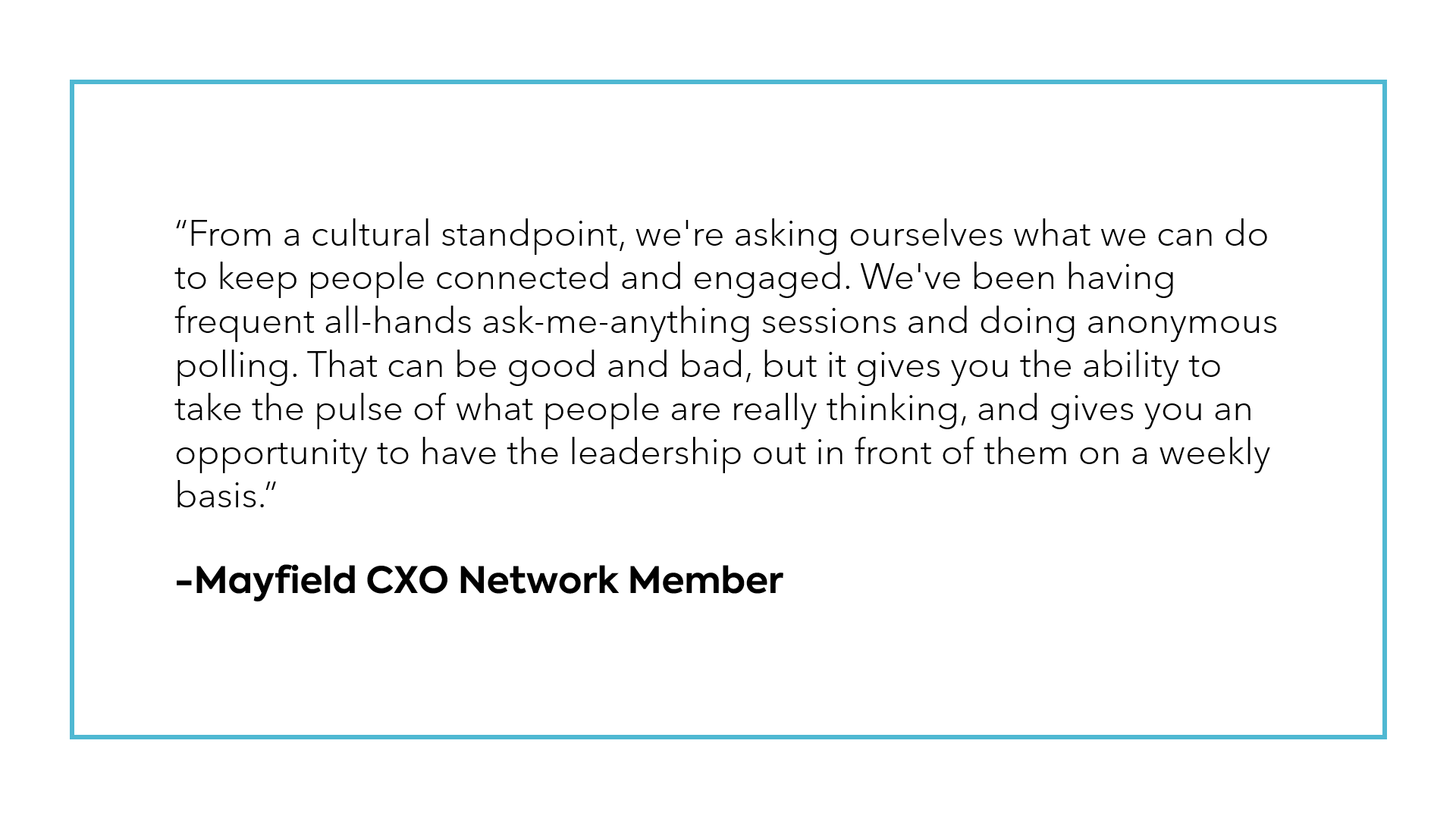

When organizations first required their employees to work remotely last March, it was seen by many as a short-term solution. Since then, working from anywhere has evolved into a long-term scenario for thousands of enterprises. Even after the pandemic subsides, the majority of employees may never return to the office full time.
What does that mean for the future of the workplace? How are organizations adapting to this new paradigm? What infrastructure needs to be in place to ensure both productivity and security?
For our August CIO Insight Call we were joined by Kelly Ahuja, CEO of Versa Networks, a Mayfield portfolio company that’s a leading producer of software-defined wide-area networks. Ahuja spoke with us about the evolution of SD-WAN and best practices for managing security when your workforce is remote. Our esteemed panel of top CIOs also engaged in a robust discussion about life during and after the pandemic. Our Mayfield CXO Members also shared several raw and insightful quotes on how they are dealing with a “remote first” reality.
Over the last few months enterprise IT departments made heroic efforts enabling people to work from anywhere by upgrading corporate networks and deploying VPNs. Now, as CIOs ponder the long-term implications of the elastic workforce, they’re running into issues around user experience, complexity, and security.
One big challenge is app availability. Forcing every employee to access the cloud through the same VPN concentrator is like forcing everyone traveling internationally to fly out of the same airport. The infrastructure is too congested; as a result, many employees are unable to get to the SaaS applications they need to do their jobs. Organizations have been forced to manage capacity by rationing access.

A bigger challenge is around complexity. Building an infrastructure that can support a hundred percent remote workforce means deploying a lot more boxes. At the same time, some large enterprises have been forced to shift from managing dozens of locations to managing thousands—virtually overnight. The operational burden is beyond the capacity of most IT organizations.
But the most critical challenge concerns security. Laptops may have been deployed quickly without the usual rigorous security procedures, and many employees are accessing corporate networks from vulnerable home networks. Attackers could easily tap into their WiFi and slip behind the corporate firewall.


CIOs need a secure and scalable approach that’s simple to deploy and manage and can deliver reliable, app-aware experiences. There are three common approaches:

You can define access policies based on identity – who an employee is and what applications or infrastructure they’re authorized to use. Marketing people can only get to marketing apps; engineers can only see engineering apps. The ability to establish granular access controls both enhances security and removes some complexity.
In response to the pandemic, Versa introduced a new software-only version of these appliances called Versa Secure Access. It takes the best of Secure SD-WAN and offers it as a cloud-managed service. It works equally well with corporate devices or BYOD and integrates seamlessly into existing IT infrastructure. Provisioning is as simple as downloading the client and registering for the service. IT gets full visibility into who’s logged in, what apps they’re using, and how well each is performing.
The creation of the elastic workforce has also forced a realignment in how IT is organized and operates. We’re seeing teams becoming less aligned to the underlying technology and more to the business applications and functions they’re managing.
The ability to work from anywhere has had a dramatic impact on work/life balance issues. People are working longer but more flexible hours at home, taking time off in the middle of the day to walk the dog, or mind their kids who are being kept home from school.
It’s changing where people live. Employees who no longer need to be within commuting distance of a corporate office are relocating to be closer to their extended families, or to reduce their living expenses. That also has long-term implications for how offices are staffed and for how talent is recruited and retained.
Managers are being forced to come up with creative approaches to keep employees engaged and connected as they move from one Zoom meeting to the next.
And as enterprises contemplate a return to the workplace sometime in 2021, they’re surveying employees to gauge their desire and need to return to the office. Some plan to adopt a hybrid model where only a small percentage of employees are in the office at any one time. Workers would reserve desk space each day, with departments rotating on site one to two weeks every month.
Much remains uncertain, but one thing is clear: The new normal won’t look much like the old. We believe the elastic workforce will remain a key component of enterprise culture long after the pandemic has passed.
